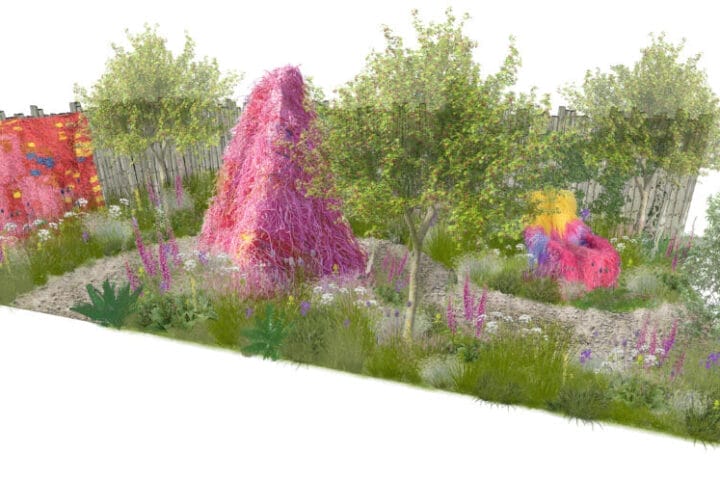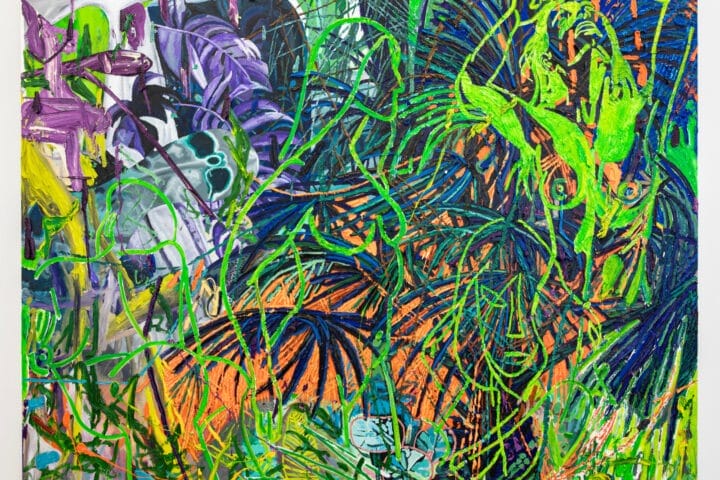NEW YORK – “One Earth, After Another,” an exhibition of work by Peruvian artist Elena Damiani, is on view at Revolver Galería from February 16-April 1, 2023. The exhibition, Damiani’s first in the gallery’s new space in New York, explores through sculpture and collage, principles linked to the geology of the earth and related scientific branches such as stratigraphy, mineralogy, paleontology, and sedimentology. In addition, Damiani is included in a Museum of Modern Art exhibition of contemporary Latin American artists, who have drawn on history as source material for new works, that opens on April 30, 2023. “Zenith,” Damiani’s permanent, site-specific installation, can be seen in the David Rockefeller Atrium of the Americas Society headquarters on Park Avenue in New York.
Damiani’s work reinterprets natural stages and processes by using a palette of inorganic materials in an attempt to understand how natural structures are composed and function. She assembles these inert fragments of the Earth to point out the discontinuity, the fragmentation processes, and the interstitial spaces in planetary history that tend to be imperceptible at first glance. This opens a space for alternative readings of nature. The work presented here, like that of her recent practice, presents a close reading of the materiality that is produced by the inner workings of the world — a space where we encounter the unfamiliar abyss of deep time.
Blind ll , a floor-based sculpture, sits in the center of the gallery’s main room. The sculpture is composed of a series of copper tubes arranged in one line on a marble base that stands as a semi-obscured partition. The work takes as a starting point Harry Bertoia’s sculpture Untitled (Monumental Sonambient) from the Standard Oil Commission in 1975. Damiani’s structure has alternating marble cylinders placed at different heights delineating what appears to be the profile of a rocky landscape or a chain of mountains. The small pieces of marble and vertical voids create a constantly shifting light that oscillates on the copper surfaces.
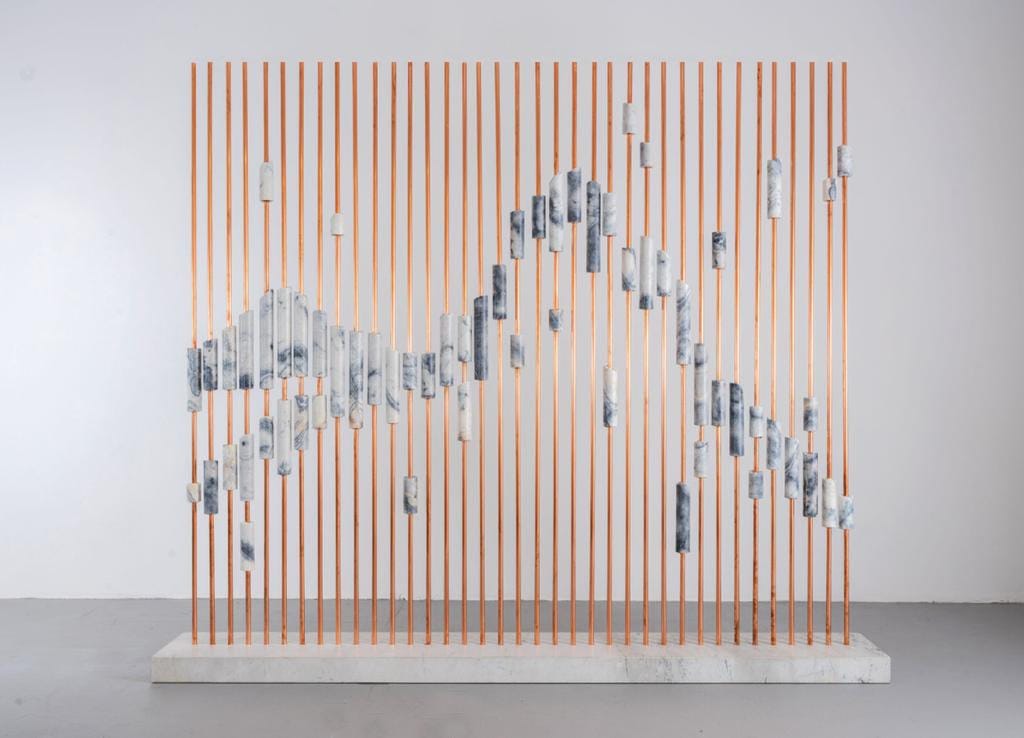
Testigos lll, a wall hung work, is made up of twenty-six rods hand-carved in travertine, resembling core samples taken from stone. The rods are cut to the vein from the same boulder and arranged sequentially side by side, recomposing the original stratification pattern of the sedimentary stone. The sequence of sediments, which alludes to the chronology of the planet’s history, points toward the fragmentary character of the geological and the earth as an assemblage of interconnected materials. The veins of the travertine are interstices that allow the reading of planetary history — a discursive, linear space where the forces that humans exert on matter is only a recent event. As Damiani explains, “The horizontal layers arranged one on top of the other, from the base to the highest point of the piece, show the heterogeneity of the sediment, making visible sudden changes in the nature of the sediment or prolonged interruptions in its formation.”
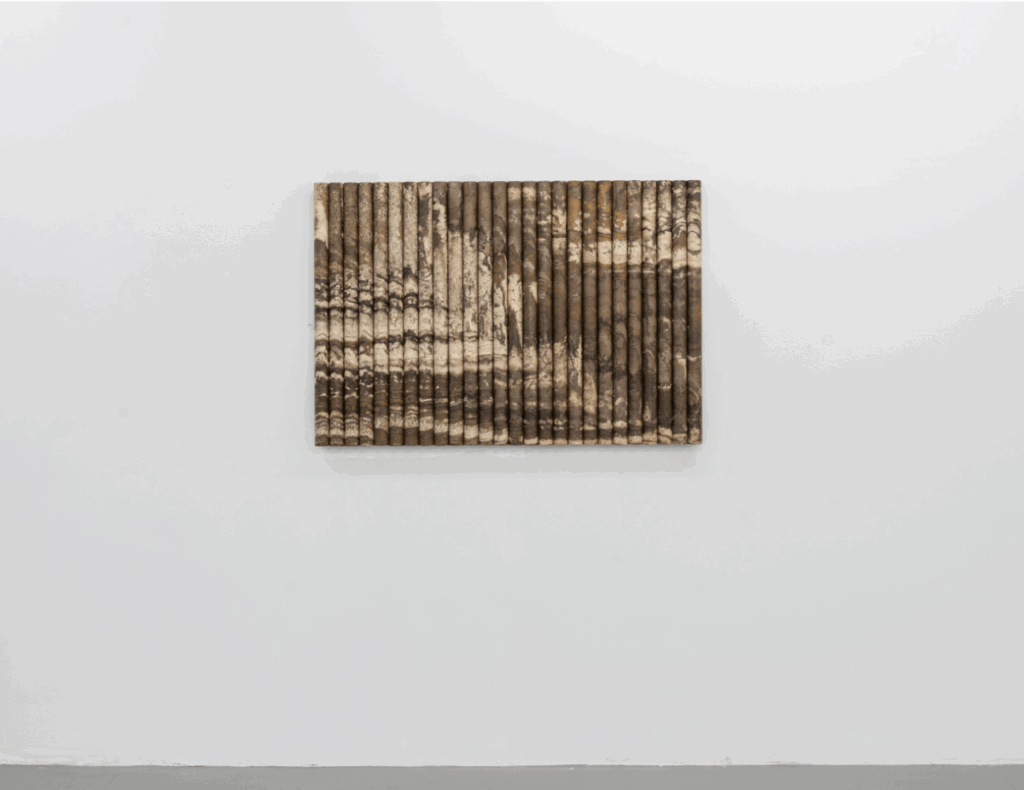
The Erratic Marbles, a series of thirty-six collages, is arranged as a set of documents that subtly confirm that history is not an ordered succession of events but rather formed from discontinuous and interrupted cognitive spaces. Each collage is made up of colored marbled endpapers — patterns similar to smooth marble or other types of stone — taken from late eighteenth and early nineteenth-century travelogues, atlases, and other manuscripts. Pasted on these materials are photographs of erratic boulders from a variety of geology image banks. The title alludes to the notion of a wandering body and suggests a sediment of irregular pattern. Correspondingly, and more precisely, it refers to a boulder that differs from the surrounding rock and is therefore believed to have been brought from a distance by glacial action. As associations of displacement and resistance to time surface on the pages that have been removed from their original volumes and punctuated with out-of-place geological formations, the decorative patterns are contrasted by the images of mere rocks, which act as a counterweight — a pairing of the overly aestheticized with austere and naked simplicity.
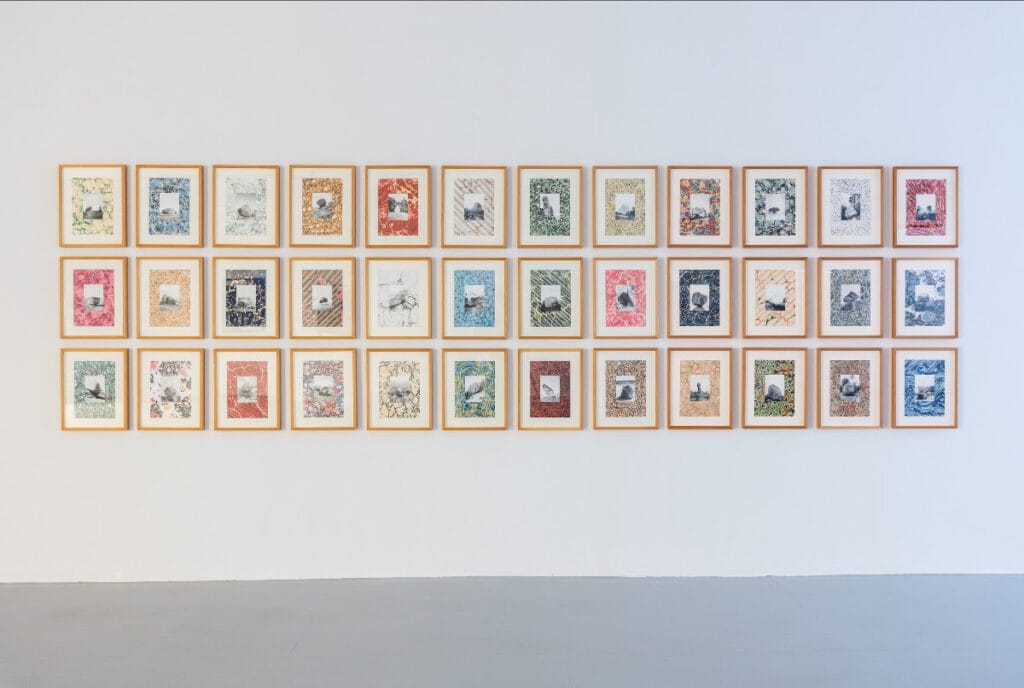
Filter N12 and Filter N16 are composed of slices of marble and granite inscribed in a geometrical composition with brass inlays and a steel frame. The solid stone sections, small metal inserts, and hollow space present us with parts of fully formed geological bodies, rock variations and configurations, and a broad spectrum of natural contexts in which these mineral elements were produced. Upon close reading, the stone surfaces reveal the underlying processes and exchange of materials that occur in a subterranean environment composed of multiple layers and interconnected materials. These geologic materials are exposed as permeable and soft under the action of the Earth’s mechanics, articulating a dynamic image of the composition of the natural world.
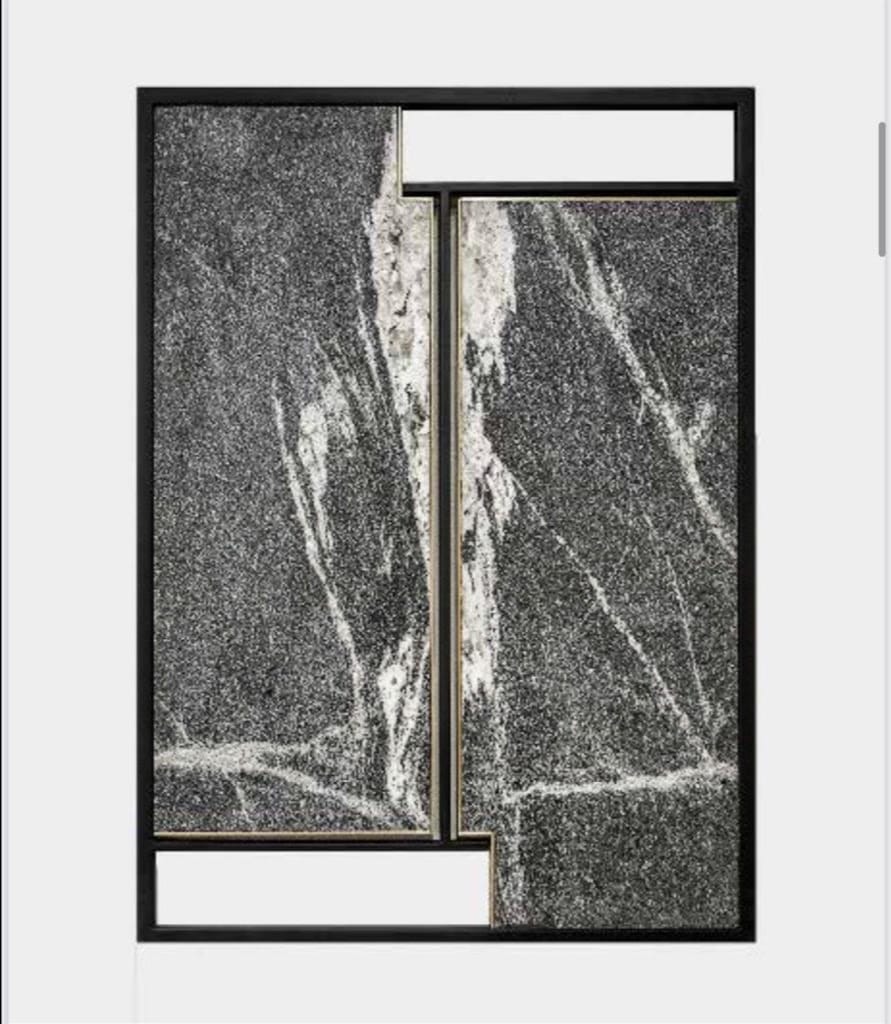

About Elena Damiani
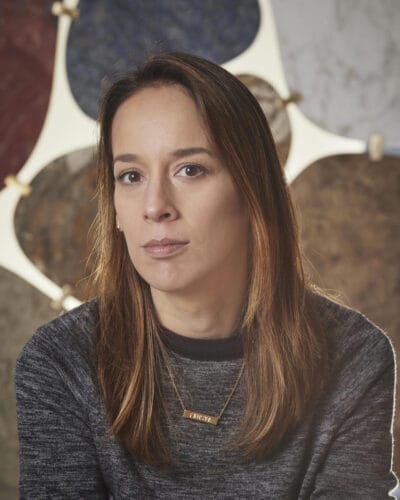
Elena Damiani was born in 1979 in Lima, Peru, where she currently lives and works. Damiani has participated in multiple international biennales, including the Cuenca Biennial (2018, 2016), Gwangju Biennale (2016), Venice Biennale, Vienna Biennale and IV Poly/Graphic Triennial (all 2015), Bienal de la Imagen y Movimiento (2014), Mercosul Biennial (2013). Solo exhibitions include MAC, Lima (2022), Chrysler Museum of Art, Norfolk, VA (2017), Museo Amparo, Puebla (2016), MUAC Museo Universitario Arte Contemporaneo, Mexico City (2015). Her work has been exhibited at the C3A, Cordoba and Museo de Arte Zapopan, Guadalajara (both 2022), Harn Museum of Art, Florida and A4 Art Museum, Chengdu (both 2021), Dhaka Art Summit, DePaul Art Museum, Chicago and MOCO Montpellier Contemporain (all in 2020), Museu Coleção Berardo, Lisbon and Galleria Nazionale d’Arte Moderna, Roma (both 2019), Skissernas Museum, Lund, (2017), Garage Museum of Contemporary Art, Moscow, and MOCAD Museum of Contemporary Art, Detroit (both 2015). She was awarded the Grants & Commissions Program, Cisneros Fontanals Art Foundation CIFO (2016) and the commission for the David Rockefeller Atrium, Americas Society, New York (2014). Her work is represented in the collections of MoMA The Museum of Modern Art, MALI Museo de Arte de Lima, GNAM Galleria Nazionale d’Arte Moderna, Thyssen-Bornemisza Art Contemporary Collection, Coleccion Patricia Phelps de Cisneros, Museo Tamayo, Kadist Art Foundation, Cisneros Fontanals Art Foundation, Kamel Lazaar Foundation, Schoepflin Foundation and FOLA Fototeca Latinoamericana.
About Revolver Galería
Revolver Galería exhibits, manages and promotes the work of young, contemporary Latin American artists. Founded by Giancarlo Scaglia Galería in Lima, Peru in 2008, Revolver Galería opened an exhibition in Buenos Aires in 2017 and one in New York in January, 2022. The gallery supports its artists by encouraging experimentation across all media and genres. Through participation in Art Basel Miami Beach and New York’s Armory Show, the gallery is creating awareness for its artists with North American museums and collectors. www.revolvergaleria.com

